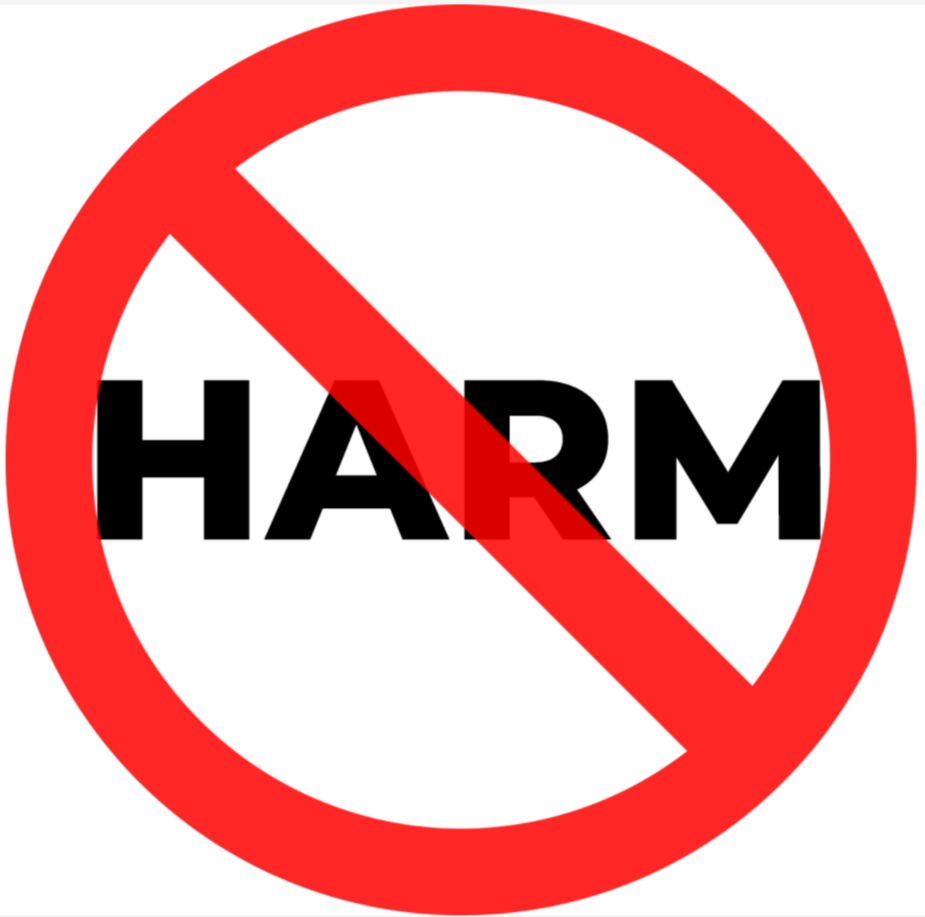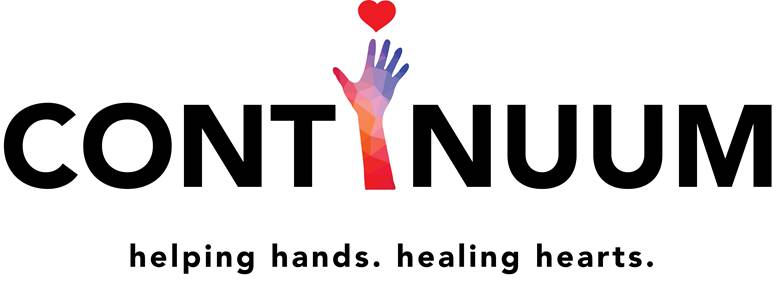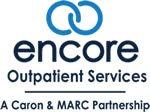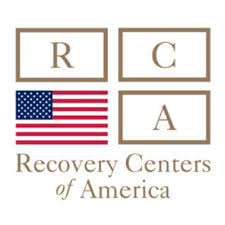HIV is inextricably entwined with substance use. This fact is central to the development of new tools to prevent and treat HIV and the implementation science that informs how these tools can be successfully deployed in diverse communities around the world. On World AIDS Day (December 1), we applaud the substantial strides that scientific research has made to help prevent and treat HIV while recognizing the complex challenges that still need to be addressed. For more than three decades NIDA has supported research at the intersection of substance use and HIV, which has resulted in important advances in knowledge that has had clinical, public health and policy implications
When the intersection of substance use and HIV is discussed, most people think about transmission among people who share injection equipment. In 2017, one in 10 new HIV diagnoses were among people who inject drugs, a 31% decrease since 2010. Harm-reduction programs like syringe service programs have been proven to decrease sharing of injection equipment and encourage hygienic practices. For example, according to findings from a NIDA-funded study published in 2015, the average monthly rate of new HIV cases among people who inject drugs in Washington, D.C., dropped by approximately 70 percent after the city implemented a syringe-services program in 2008.
Timelines
NIDA’s AIDS Research Program was established in 2004 to support the development, planning, and coordination of high priority research at the intersection of HIV and substance use disorders. View a timeline of key research findings since the program’s inception.
Research Findings Timeline (PDF, 2.4MB)
However, sexual behavior is also a critical yet often overlooked component of the complex relationship between HIV and substance use. Substance use affects behavior in ways that increase engagement in unprotected sex and increase the possibility of sexual transmission of HIV and other infections. Stimulants like methamphetamine increase libido while also decreasing impulse control and can increase unprotected sexual contact. This is particularly concerning as methamphetamine use rises in the United States, including among gay men and others who face higher risks for HIV. A recent study found methamphetamine use to be the single biggest risk factor for becoming HIV positive among gay and bisexual men. In some cases, people with a substance use disorder engage in survival sex, where sex is exchanged for shelter, food, or access to drugs.
People who have substance use disorders are a hardly reached population, often lacking access to health care. High levels of stigma exist in our healthcare system toward people with substance use disorders and research has demonstrated this is a factor in the timely receipt of antiretroviral therapy (ART) to treat HIV. Fear of stigma or legal consequences are two powerful reasons why people who use drugs may avoid healthcare settings. This lack of access to clinical care means that an individual may not receive prevention services, diagnoses, or treatment for substance use disorders and co-occurring infections like HIV or hepatitis C.
Finding tools that work in the lives of people who need them, including people who use drugs, is imperative to ending the HIV epidemic in the United States and abroad. An array of choices for HIV prevention and treatment are needed, and they must be accessible, affordable, and desirable to the people who could benefit. Research has delivered two highly effective methods of HIV prevention: Daily oral pre-exposure prophylaxis, or PrEP, is 90 percent effective when taken as prescribed. Undetectable Equals Untransmittable (U=U), also known as treatment as prevention, means that people living with HIV who achieve and maintain an undetectable viral load by taking ART as prescribed cannot transmit HIV. Both of these strategies require taking a daily oral pill, which can be challenging for many people, including people who use drugs.
Research into long-acting methods of prevention and treatment hold great promise in alleviating the burden of taking daily medications. In November, an NIH-funded trial conducted in several African countries found that long-acting (8 weeks) injection of the already-approved HIV drug cabotegravir was safe and was more effective at preventing HIV in sexually active cis-gender women than daily oral pre-exposure prophylaxis, or PrEP. Another study found similar results earlier this year for long-acting injectable cabotegravir in cisgender men and transgender women who have sex with men.
We celebrate these advances, yet important research questions remain to help address real-world complexities of implementation. We must ensure that new HIV prevention tools are not only safe and effective but also desirable to individuals with complex needs including people who use drugs. NIDA is funding research on how to integrate the prevention and treatment of substance use and HIV in a way that addresses individual need and decreases stigma. For example, NIDA is supporting research to determine how to integrate PrEP into substance use disorder treatment, decrease delays in ART initiation for people who use drugs by addressing barriers including stigma on the part of many healthcare providers and practitioners, and understand how chronic drug exposure impacts the HIV reservoir in the brain.
Successful implementation of safe and effective tools to prevent and treat HIV and substance use disorders cannot occur without understanding and addressing social determinants of health. People at risk for or living with HIV and people with substance use disorders carry the burden of stigma perpetuated by society as well as stigma that is internalized or self-inflicted. Laws in the United States and in other countries criminalize aspects of exposing others to HIV, and enforcement of these laws often disproportionately impact Black Americans, similar to how enforcement of drug possession charges are brought disproportionately against Black Americans and other marginalized groups. Racism, poverty, discrimination against sex and gender minorities, and lack of access to healthcare all constitute social determinants of health. Research is needed to better understand how to address these complex issues and remove barriers to high quality care for substance use and HIV.
If we want to successfully leverage new biomedical advances for HIV prevention and treatment, we must address substance use and people with substance use disorders. Research to understand how best to implement tools in real-world situations for these individuals is an important first step. Today on World AIDS Day we honor the achievements of dedicated researchers, health care professionals, clinical trial participants, advocates, and members of the global community, and reaffirm NIDA’s commitment to a robust research agenda with findings that will hopefully one day result in a world without HIV.
President’s Message to the SMART Recovery Community
I bring greetings to our entire community and a special welcome to seven new SMART Recovery USA board members, bringing our total to seventeen. Not since SMART was founded more than a quarter-century ago have we assembled a more talented and dedicated group of people to help lead our organization. They have the diverse skills and vision we need to innovate our services and extend SMART’s reach to every individual and family who needs our help.
The need for SMART Recovery has never been greater as the COVID pandemic has made an already daunting addiction epidemic even worse. Our community will meet these challenges more quickly and more effectively with this infusion of new leadership.
We are fortunate to have Joe Gerstein and Tom Horvath from our original board, along with long-time member and Vice President Brett Saarela, who knows addiction as a peer and a highly regarded professional counselor, and Elaine Appel, a 16-year member with nonprofit expertise. They helped build and sustain this organization for more than a quarter-century and provide us with continuity as we address the critical challenges ahead.
As this year draws to a close, I’d like to share brief thoughts about the latest science that supports us, SMART leadership, our pending two year strategic plan, and how we can create our future together.
The Science Supporting SMART’s Efficacy
A growing body of scientific research supports the efficacy of SMART. Two major longitudinal studies underway funded by the National Institute on Alcohol Abuse and Alcoholism (NIAAA) should increase our evidence basis:
- Expanding the Science on Recovery Mutual Aid for Alcohol Use Disorder: An Investigation of SMART Recovery by John F. Kelly, Ph.D., ABPP, Elizabeth R. Spallin Professor of Psychiatry in the Field of Addiction Medicine at Harvard Medical School, the Founder and Director of the Recovery Research Institute.
- A third study in the Peer Alternatives (PAL) series comparing AA, LifeRing, SMART Recovery, and Women for Sobriety by the Alcohol Research Group, led by Sarah E. Zemore, Ph.D., senior scientist and associate director of the group’s National Alcohol Research Center.
The first two PAL studies found, among other things, that the four recovery support models are equally effective. In 2019, SMART Recovery USA honored Zemore as the inaugural recipient of the SMART Science Award.
To promote worldwide collaboration on such research, SMART Recovery International recently formed the Global Research Network. Kelly and Zemore serve on the SRI Global Research Advisory Committee, which oversees the network. The committee is chaired by Peter Kelly, Ph.D., associate professor and deputy head of research at the School of Psychology at the University of Wollongong, Australia, and a member of the Australian College of Clinical Psychologists.
Leadership to Support a Growing Organization
The first SMART Recovery board was composed almost entirely of professionals, including medical practitioners, addiction psychiatrists, psychologists, and scientists. Over time, we have evolved to the point that peers occupy most of the board seats, including all the officer positions. I suppose one could say today that “the inmates are running the asylum.”
However, the fact is that diverse skills and perspectives are critical to lead a growing nonprofit. These include essential business or entrepreneurial skills, financial and risk management, education and training, marketing and communications, information technology, fundraising, government relations. The new board members give us more racial, age, and gender diversity. Also, all of them have contributed to our new long-range strategic plan.
The Two-Year Strategic Plan
We started this strategic planning process late last year. We have benefited a great deal from guidance by a team of expert consultants associated with the SAMHSA initiative known as Bringing Recovery Supports to Scale: Technical Assistance Center Strategy (BRSS TACS). This initiative has a long history of helping groups in the recovery field. For example, they have provided significant support to Faces & Voices of Recovery. In fact, Patty McCarthy, FAVOR executive director, served as deputy director, the position that our lead BRSS TACS consultant, Valerie Gold, holds. They put a great deal of work into this undertaking and wrote it up as a model of their best work.
In this planning process, we have made an in-depth, comprehensive, and honest assessment of the state of SMART USA. We have tried hard to recognize the elephants in the room—averting a common mistake that dilutes and undermines strategic planning. It is a telling sign of our maturity that AA is not among the elephants—except perhaps the need to stop thinking of ourselves as an “alternative.” To slay the elephants, we must:
- Increase diversity in our community, especially people of color, youths, and women.
- Better support, train, honor, and celebrate our volunteers.
- Cultivate more, larger, and sustainable funding streams.
- Undertake aggressive and ongoing marketing and communications programs that target professionals, the broader medical community, and the general public.
The next step is to execute the plan. This will not be easy, but SMART has endowed us with the skills and orientation required. We are empowered, resilient, and open to many solutions. We have boundless passion, energy, and commitment to our cause.
We need to nourish trust, mutual respect, a team orientation, and corresponding values that produce the gestalt effect where the whole is greater than the sum of its parts. We need this for our staff, our board, and our volunteers. Overwhelmed by the fast pace of growth over the past ten years, we must rebuild our culture. We all need more life balance, relief from compassion fatigue, and a sense that our work is valued, that we are making a difference in the mission that SMART pursues.
Creating Our Future
The best way to predict your future is to create it.
That famous line is often attributed, incorrectly it turns out, to Abraham Lincoln. Whoever created it had a self-empowered mindset. Management guru Peter Drucker used it in strategic planning courses for aspiring business leaders. He contrasts two people on a river, one floating on a raft who drifts aimlessly wherever the current takes him with the other in a kayak who navigates his way toward a desired destination. The kayaker is not entirely creating his future, but he exerts much control, adjusting the speed and the course while avoiding obstacles.
Our effort to execute this strategic plan might be more analogous to white-water rafting in which we’re together in the same craft. Anyone who’s had this adventure knows the peril of careening through roiling waters around massive boulders that can upend the raft and toss everyone overboard. Staying dry requires a highly coordinated team effort. For example, to avoid collisions with a boulder, everyone must paddle furiously in the same direction well before reaching it. Only then can you make the turn to avoid it.
A memory forever imprinted in my brain is encountering a series of boulders speeding down a West Virginia river. After bypassing two boulders, we all felt we had mastered this group maneuver. However, a moment of complacency led to a head-on collision. Instead of turning the raft over, it spun us around, and we were then flowing backwards down the river. This was not a comfortable feeling. After bouncing around another boulder, thankfully, we were saved by an eddy—a patch of calm waters formed where water flowing upstream meets the downstream current—where we righted our raft.
Here we are today, enduring a pandemic-epidemic of addiction and fatal overdoses. This dire situation presents SMART with tremendous opportunities to grow and improve to help a lot more people. Our plan has identified many of the boulders. Working together, paddling in the same direction, we will navigate around them. We will make mistakes, and we will learn from them, as SMART has taught us.
A SMART Meeting for Everyone
I invite anyone in the SMART community to help us take the many action steps associated with this strategic plan. We are finalizing the details and forming numerous task forces and committees in a broad-based creative enterprise to grow and rebuild SMART USA. Our goal is no less than having a SMART Meeting for Everyone.
I am eager to hear your thoughts on any or all of the thoughts above. In the meantime, stay strong and depend on one another.
Together we are SMARTer, together we make a difference.

Subscribe To Our Blog
Join our mailing list to receive the latest news and updates from the SMART Recovery Blog.
You have Successfully Subscribed!

I stumbled upon this interesting study that’s based on a thought experiment. Researchers asked smokers the following question, “Imagine that a new ’clean’ nicotine product has been developed. This new product is as satisfying to use as smoking cigarettes. It is also as addictive as cigarettes, but it is far less harmful than cigarettes. It also costs slightly less than cigarettes. How interested would you be in using this product?“
Some of their findings are discussed as follows [emphasis mine]:
Our research found that smokers simultaneously support the use of a hypothetical clean nicotine product for harm reduction purposes, while also holding negative attitudes towards clean nicotine for long-term maintenance of nicotine addiction. This may partly be due to the stigma associated with the term “addiction” (Wigginton et al., 2016b). There is often a moral element to perceptions about addiction, and those who are addicted can be perceived as weak-willed, and lacking in personal responsibility (Thompson, Pearce & Barnett, 2007; Wigginton, Morphett & Gartner, 2016a). When discussing smoking and treatment, smokers often refer to the importance of willpower, personal choice and autonomy, all of which are greatly valued in contemporary society (Morphett et al., 2013, 2015; White, Oliffe & Bottorff, 2013). Nevertheless, it is clear that there is a significant proportion of smokers who wish to end their addiction to smoking who also do not want to replace their addiction to smoking with addiction to an alternative nicotine product (Morphett et al., 2015; Wigginton et al., 2016b). They should be supported in this goal, however it should also be the responsibility of health professionals to provide smokers with accurate information about the relative risks of all nicotine products, so that they can make informed choices (Kozlowski & Edwards, 2005; Lynn T. Kozlowski & Sweanor, 2016). Given the aversion to addiction observed in this study, informing consumers about differential addictiveness may influence their product choices.
I don’t find it at all surprising that smokers would prefer to be free of nicotine addiction. What I find interesting here are the assumptions of the authors.
This would appear to be an expression of an internal locus of control — an expression of their values, preferences, and goals. However, it appears to be understood as a product of an external factors and resulting personal pathology — social stigma, moralizing, misperceptions related to will-power and personal responsibility, and values held by society.
I suppose the other interesting assumption is that addiction could be a neutral to positive experience if only we can successfully minimize the harms.
I may be wrong, but I read the use of “however” as implying that this wish is to be indulged despite the irrationality.
If we can assume, for a moment, that this preference is an expression of their true, self-determined values, goals, and preferences, rather than internalized stigma, a moral reflex, or a capitulation to social pressures, what does this say about the experience of addiction? Even when the addiction is not disabling or harmful?
I’d suggest that it implies the experience of addiction is an experience of impaired control — wanting to stop, wanting to be able to stop. Even in the absence of harm, no one would choose to have impaired control over oneself. (Of course, the possibility of harm-free ATOD addiction exists only as a thought experiment.)
If we’re willing to grant them enough agency to suspend the theory that it’s a product of internalized stigma, the fact that many people with nicotine addiction would reject a theoretical harm-free nicotine addiction suggests that, for many, there’s no such thing as harm-free ATOD addiction.

The majority of treatment for drug and alcohol problems is outpatient. Trying to achieve abstinence can be tough and some evidence suggests it is more likely to be the goal of clients than the aspiration of professionals for their clients. How well do clients do?
This study by Gerald Cochrane and colleagues from New York looked at those clients maintaining abstinence in early treatment and compared them to those who found it harder. They looked at big numbers (almost 500 patients) to see what was going on.
The folk who tested negative for drugs early on didn’t seem to have worse drug problems, but they did have better mental and physical health and they were less likely to use more than one drug. The thing that caught my attention was that the patients evidencing abstinence also had much higher attendance rates at 12-step mutual aid groups.
They reported:
“a striking behavioral difference among the drug positive versus -negative samples in their utilization of 12-step programs in the 90 days prior to baseline assessment. Twelve-step attendance was endorsed by 69% who were abstinent from alcohol at baseline, compared to 40% of those reporting alcohol use in the past 7 days… Among cocaine/stimulant users, 74% of those testing negative at baseline reported 12-step attendance (compared to 49% of those testing positive).”
The authors conclude: “This study provides new data about the resilience of those who test drug-negative early in treatment by showing that many participants are already attending 12-step programming prior to treatment entry, especially for primary alcohol and stimulant users. In specific terms, a substantial percentage of alcohol (69%) and stimulant (74%) abusers who had stopped using their primary drug by the early treatment assessment reported recent involvement in 12-step programs.
And it looked like starting to go to meetings before treatment began was associated with better outcomes (my emphasis):
Mean days of 12-step program attendance in the past 90 days among negative stimulant and alcohol users suggests that self-help treatment may have been underway for some time before the formal treatment program had begun. Such proactive behavior represents an important strength that these individuals bring to the current treatment episode.”
There are questions around whether more resilient people choose to go to mutual aid or whether mutual aid makes them more resilient, but if we look at the growing research on the benefits of developing healthy social networks, then even if the former is true, the latter (going to mutual aid makes you more resilient) is also likely to be true, as this study says, and ought to be encouraged at all points on the recovery pathway as part of the process of building recovery capital.
Although this study is about 12-step mutual aid, we can make a reasonable assumption that it might also apply to SMART or other mutual aid groups (or indeed for those who attend more than one type) as the emerging evidence suggests.
This study found that early abstinence ‘is common among substance users entering treatment with a range of primary substances of abuse including alcohol, marijuana, cocaine/stimulants, and opioids.’ We have evidence from elsewhere that longer term sobriety and improved quality of life are associated with continuing mutual aid attendance.
There are three challenges for treatment services and the professionals who work in them around this research. The first is that not every service has mutual aid on its radar. Even now with increasing evidence, there is still not enough awareness of its value. The second is that there is still some prejudice against 12-step groups. You don’t have to look too far to find it. And the third is that while the importance of mutual aid might be recognised in an increasing number of places, we could be better at building bridges from treatment to mutual aid.
Note: this is a lightly edited version of a previously published blog.
Photo credit: istockphoto.com/KatarzynaBialasiewicz (under license).

A central strategy of the new recovery movement is sharing our stories in public and professional venues to change public perceptions and public policies related to addiction and recovery. Drawing from earlier social movements, we learned that “contact strategies”—increasing personal contact between marginalized and mainstream populations—is one of the most effective means of reducing stigma and discrimination and expanding opportunities for full community participation. Public attitudes toward those recovering from alcohol and other drug problems become more positive when members of the public have positive exposure to people living in long-term recovery with whom they can identify.
We also learned that there were limitations to this approach of public recovery storytelling. Changing personal attitudes of those exposed to our stories left in place much of the institutional machinery (e.g., laws, policies, and historical practices) that negatively affected individuals and families experiencing alcohol and other drug problems. Twenty years into the new recovery advocacy movement, discrimination against us remains pervasive. We must remain vigilant to prevent appropriation of our stories by others to support unrelated agendas. When this happens, we experience further marginalization.
People in recovery face discriminatory barriers in housing, employment, education, professional licensure, health care, and numerous arenas of public participation (such as voting and holding public office). Laws and regulations intended to protect us from discrimination remain unenforced. Addiction treatment remains of uneven quality, often lacking in long-term recovery orientation, and limited in its accessibility and affordability. Too many communities lack long-term recovery support services. And people in recovery continue to be excluded from meaningful representation within alcohol and drug and criminal justice policy discussions and decisions.
It is in this context that we must be clear about what our public recovery storytelling can and cannot achieve, and relatedly, who precisely is responsible for eliminating entrenched policies and practices that have such a direct impact on our lives.
There is a paradox within our anti-stigma efforts. We must challenge oppressive barriers to recovery and full participation in community life. As Frederick Douglass so clearly and eloquently stated, “Power concedes nothing without a demand.” Historical inertia and personal and institutional self-interests sustain structures of oppression until they are challenged. Who will pose such a challenge if not people in recovery? Yet the ultimate responsibility for dismantling discriminatory practices rests upon the shoulders of the systems within which such oppressive machinery continues to operate. The responsibility to eliminate discrimination rests with those who discriminate. By itself, telling the perfect recovery story will not end discriminatory practices.
So where does recovery storytelling fit into all this? Our stories are a means of humanizing addiction and recovery—a means of challenging the myths, misconceptions, and caricatures that have let others objectify and isolate us. Our stories are an invitation for people to reconsider the sources of and solutions to alcohol and other drug problems. Our stories are a means of building relationships that embrace us within the human family—as people who share the dreams and aspirations of others. Our stories, directly or indirectly, also constitute Douglass’ demand to change the structures that have prevented embrace of our humanity and rendered us people to be feared, shunned, or punished. This involves far more than changing people’s perceptions, attitudes, and behaviors toward those with lived experience of addiction and recovery. It involves identifying and eliminating the precise mechanisms (e.g., policies and practices) through which social shunning and discrimination have been institutionalized.
This is not to suggest that people in recovery have no role to play in this change process nor that we should passively embrace a victim status in the face of such systemic challenges. We can take responsibility for our own personal and family recovery, make amends to those we have harmed, and reach out to others still suffering. We can participate in recovery-focused research (to create a science of recovery that can challenge recovery misconceptions), participate in protests and advocacy efforts, offer our recovery stories in public and professional educational venues, and represent our lived experience within policy-making settings. Such actions have contributed to numerous positive changes.
Our stories possess immense power as long as we recognize our stories alone will not create recovery-friendly social institutions or recovery-inclusive communities. We must not allow our stories to stand as superficial window-dressings while discrimination remains pervasive, even among some of the very groups and institutions who on the surface support our storytelling. Our stories must support specific calls for institutional change. We must hold individuals and institutions that discriminate accountable until they eliminate such conditions.
How we craft and communicate our stories for public/professional consumption is an important element of this process of social change. Recovery advocacy organizations have a responsibility to prepare and support the vanguard of individuals who heed the call of this public story-sharing ministry. This includes building a community ethic that protects those who possess the bravery and privilege of sharing their recovery stories in public forums. Collecting our stories without meaningful dialogue about how our stories will be used and the protections we will be afforded is unacceptable.
This is the first in a continuing series of blogs on personal privacy and public recovery advocacy. We hope it will set recovery storytelling within a larger context. The remaining blogs will explore the risks of public recovery storytelling, the ethics of public recovery story sharing, and suggest guidelines on protecting personal privacy and safety within the context of public recovery storytelling. The impetus for this series comes from our knowledge of individuals who have experienced unanticipated harm related to their advocacy efforts.
Link to Bill White Papers web site HERE
The 2020 SMART Recovery East Coast Conference was a success! Thank you to the presenters and guests for attending.
For those who were unable to join us on October 24th, and for everyone who wishes to watch it again, the entire conference is now available.
The six hour program includes presentations from:
- Bill Greer, SMART Recovery Board President
- Christopher C. Wagner, Ph.D., Associate Professor and Licensed Clinical Psychologist, Virginia Commonwealth University College of Health Professions – The Special Challenges of Motivational Interviewing in Groups
- Carrie Wilkens, Ph.D., Co-Founder and Clinical Director, The Center for Motivation and Change, New York; New Marlborough, MA; and Washington, DC. – Inviting Change Through Empathic Understanding: The Invitation to Change
Dr. Wagner’s book – Motivational Interviewing in Groups
Dr. Wilken’s book – Beyond Addiction: How Science and Kindness Help People Change
View the full video on our YouTube channel
Thank you again to the sponsors:
Subscribe to the SMART Recovery YouTube Channel
Video storytelling is a powerful tool in recovery, and we are proud to share our SMART Recovery content free-of-charge, available anywhere, on any device. Our videos hope to inform, entertain, and inspire anyone in the recovery community.
Subscribe to our YouTube channel and be notified every time we release a new video.
Subscribe To Our Blog
Join our mailing list to receive the latest news and updates from the SMART Recovery Blog.
You have Successfully Subscribed!
New Toolkit: National Impaired Driving Prevention Month
Raise awareness for impaired driving prevention and your program in December
December is Impaired Driving Prevention Month and a critical time for your DWI court to engage and educate your community. Awareness is key to reducing the impaired driving epidemic, and your treatment court can help. Download your newly redesigned toolkit from NADCP’s National Center For DWI Courts to find out how!
Inside the toolkit you’ll find:
- Ideas for safe events to raise awareness about the dangers of impaired driving and to educate your community on how DWI courts are making a difference
- Tips for engaging your local media and elected officials
- Sample social media posts and op-ed
- Ideas for keeping your participants safe during the holiday season
- And much more!
We encourage you to share what your program is doing on social media! Tag us on Twitter @_allrise_ or on Facebook @AllRise.org
The post New Toolkit: National Impaired Driving Prevention Month appeared first on NADCP.org.
Webinar: Military Leadership Principles in Veterans Treatment Courts
Join the webinar: Nov. 23 | 2:00 p.m. ET
NADCP’s Justice For Vets is presenting a webinar on applying the principles of military leadership to veterans treatment court programs.
Led by retired U.S. Army Major General Clyde “Butch” Tate, this webinar addresses the core principles of military leadership and how to apply them successfully to veterans treatment court teams and participants. Attendees will learn to identify and describe leadership do’s and don’ts when working with justice-involved veterans and how to apply these principles in treatment courts. This is a must-attend event for veterans treatment court practitioners in any role!
About the speaker: Major General Clyde “Butch” Tate (retired)
Major General Tate is NADCP’s chief counsel. He retired from the U.S. Army in 2014 as deputy judge advocate general, one of the branch’s top two military attorneys. An expert in veteran and military law policy, Tate also advises other organizations that connect veterans and their families with other veterans, community partners, and government services.
The post Webinar: Military Leadership Principles in Veterans Treatment Courts appeared first on NADCP.org.
Substance use disorder is something that impacts everyone in the wake of the disease…especially family members, close friends, and loved ones. When someone you love is suffering from the disease, they act in ways they would not typically act under normal circumstances. This can consume your life, and can often make family life feel unmanageable.
Establishing boundaries is an incredibly powerful way to manage the way that substance use disorder impacts your family life. Healthy boundaries help establish guidelines for living and relating to others. If they are reasonable and clearly communicated, they provide security for everyone involved. Boundaries prepare you for what to expect in your relationships, and likewise, what might occur if that expectation is not met.
What are boundaries and why are they important?
When a loved one is active in their disease, everything in life can begin to blend together. Their problems become your own, and the line between where their suffering ends and yours begins can become undetectable. A boundary must be something that is measurable and specific, reasonable, and enforceable.
Boundaries allow you to detach with love–not from the individual, but from the disease itself. When you detach with love, you stop protecting the disease. Boundaries provide you with a sense of individuality and allow you to focus on your feelings, problems, and needs, which ultimately allows you to better support your loved one in need.
Recovery is multi-faceted, one component being the recovery and healing of the family. Communication, vulnerability, and strong boundaries are some of the most important components of family recovery.
What should you set boundaries around?
The need for specific boundaries can vary, but here are some helpful things to think about when assessing your personal situation:
- How will you allow others to treat you?
This protects you from being harmed by others.
- How will you treat others?
This protects others from being harmed by you.
- How will you treat yourself?
This allows you to regulate your physical, emotional, and spiritual health.
Some examples of specific boundaries are:
- No substances, nor persons under the influence are allowed in the house
- No disrespect is tolerated
- I will not purchase alcohol or substances for you (your loved one)
- I will not give you money for said substances
Base boundaries off of how you feel…
You will know a boundary has been violated based on your emotions. What specific things make you feel anxious, upset, or stressed? These are the things that you should be working to set boundaries around.
Have an open and honest talk as a family with your loved one
It’s not what you say, but how you say it. Establish open communication with your loved one in recovery, or in active use, and make your boundaries clear to them. State your parameters, and the consequences that will occur should those boundaries be violated. For example, if you tell your loved one that no drugs or alcohol are allowed in your home, they must honor that. You might convey to them that if they violate this boundary, they must find somewhere else to stay.
Because the disease feeds on gray areas, loopholes, and blurred lines, make your expectations as clear as possible.
Seek additional support
One of the ways to heal yourself is to take the time to do so. When a loved one is suffering, it can become so ingrained in you to help them that you forget to help yourself. Though often forgotten, self-care makes you more sensitive to the needs of others and ourselves. Do things that support your personal well-being—pray, meditate, paint, exercise, etc.
As you work to take care of yourself and support your loved one in recovery or in need of recovery, seek the collective wisdom and support of a 12 Step group such as Al-Anon or Nar-Anon. To find a meeting in your area, visit https://al-anon.org/ or https://www.nar-anon.org/find-a-meeting
***
For more information, resources, and encouragement, ‘like’ the Fellowship Hall Facebook page and follow us on Instagram at @FellowshipHallNC.
About Fellowship Hall
Fellowship Hall is a 99-bed, private, not-for-profit alcohol and drug treatment center located on 120 tranquil acres in Greensboro, N.C. We provide treatment and evidence-based programs built upon the Twelve-Step model of recovery. We have been accredited by The Joint Commission since 1974 as a specialty hospital and are a member of the National Association of Addiction Treatment Providers. We are committed to providing exceptional, compassionate care to every individual we serve.

The quote below is from a piece that compares San Francisco’s drug plan to Portugal. The author appears to be an advocate of a comprehensive response to San Francisco’s drug problem — criminal justice reform, harm reduction, treatment, etc. — so she definitely is not making an argument against harm reduction.
She refers to an interview with Dr. Joao Goulao, Portugal’s Director-General of The General Directorate for Intervention on Addictive Behaviours and Dependencies. This portion speaks to the role of treatment in Portugal’s system.
One point he made tripped me up, because it’s so foreign to San Francisco. Here there are long waiting lists for many services, including drug treatment. Is there really always a spot in a drug treatment facility available in Portugal?
“Always,” he said, looking surprised by the question. “Always.”
He said the country spends 75 million euros — about $85 million — on drug treatment each year.
The approach means Portugal never had to open a safe injection site
Dr. Goalao says that Portugal has plans for supervised injection sites next year but the author adds, “But the concept is in addition to the country’s approach to drugs, not its entire plan, like here in San Francisco.”
The whole piece is well worth reading but it is behind a paywall.












